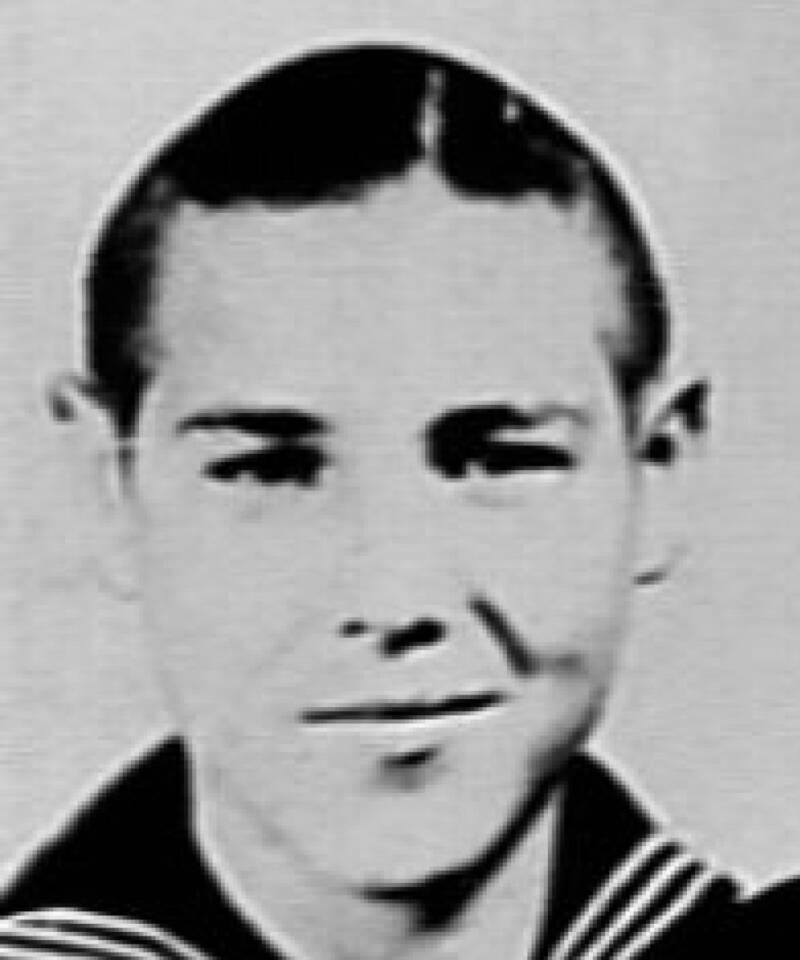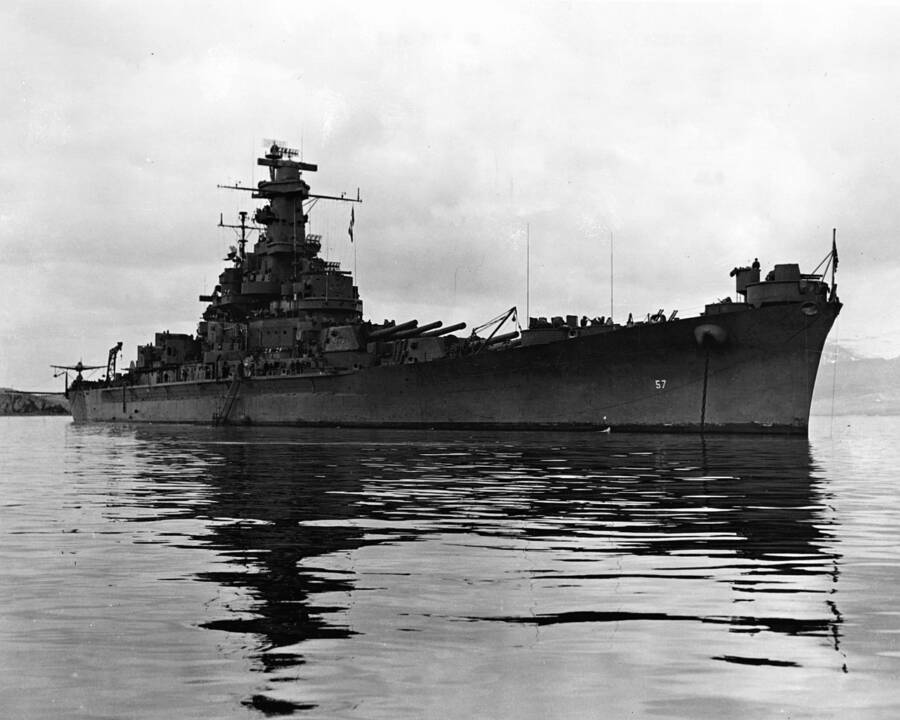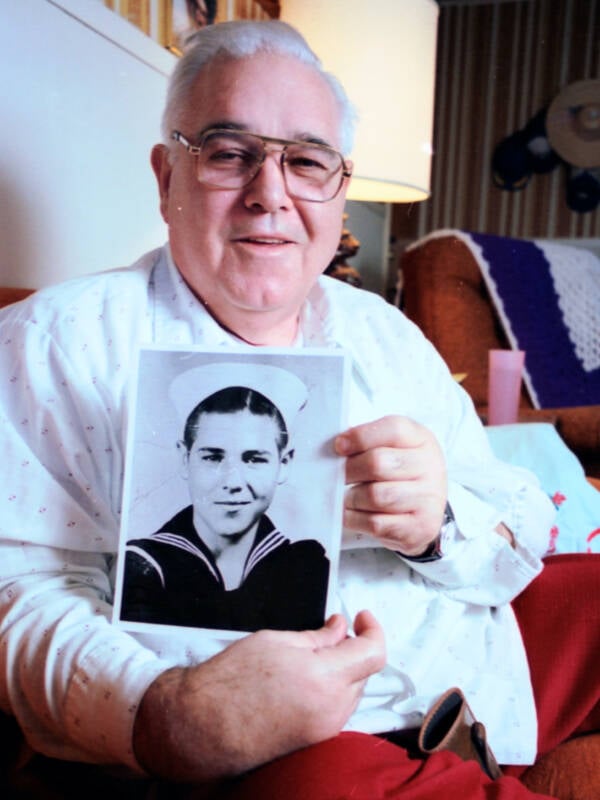The youngest American to serve in World War 2, Calvin Graham lied his way into the Navy at 12 years old in 1942, eventually earning the Bronze Star and the Purple Heart.

Wikimedia CommonsIn 1942, Calvin Graham enlisted in the U.S. Navy and soon began fighting in World War 2’s Pacific Theater — even though he was only 12 years old.
When Calvin Graham was 11 years old, he began shaving, convinced it would make him look older than he was. He also practiced speaking in a deep voice, pretending to talk like a man.
Though his behavior wasn’t entirely unusual for a boy who wanted to be a grown-up, his motives were decidedly unique. Rather than pretending to be an adult for fun, Calvin Graham sought to pass as an adult so that he could enlist in the United States military and fight in World War II.
Graham was living in Crockett, Texas, when he decided to enlist in the Navy in the aftermath of the Japanese attack on Pearl Harbor. He had recently moved into a boarding house with his brother, escaping an abusive father and an overly crowded family home.
During that time, Graham worked several jobs to stay financially afloat and rarely saw his mother. As an already incredibly independent kid, it’s no wonder Graham felt ready to join the war effort by the time he turned just 12 years old.
How Calvin Graham Bluffed His Way Into World War II

Wikimedia CommonsFrom the Guadalcanal campaign to the Battle of Santa Cruz, the USS South Dakota took part in some of the most pivotal clashes of World War II’s Pacific Theater.
To enlist to fight in the war, boys had to be at least 17. At 16, however, one could join with a parent’s consent, but 17 was still preferred. However, Graham was undeterred. Along with two of his friends, he forged his mother’s signature on his enlistment papers and stole a notary stamp from a local hotel. Graham told his mother he was going to visit relatives — and instead lined up to enlist with the Navy in Houston, Texas on August 15, 1942.
However, though one might think that forging his mother’s signature would be the most challenging part of his scheme, they’d be wrong. Graham was most worried that the dentist, who checked the teeth of all recruits and would undoubtedly be able to tell his age and would call his bluff. However, he had a plan in place should that issue arise.
When he arrived at the enlistment office, he lined up behind two boys who he knew were only 14 and 15. When the dentist attempted to call him out for his age, Graham told him that he knew for a fact that the boys ahead of him were underage and had been let through anyway. Reluctant to fight with the young man, the dentist let Calvin Graham pass.
However, though Calvin Graham was driven and determined to fight, as many of his relatives had before him, he was unprepared for some of the preparations of war. According to Graham, the drill instructors knew that a number of the recruits were underage and punished them for it, often making them run extra miles and carry heavier packs.
Despite the stress, however, Calvin Graham persevered and made it onto the USS South Dakota, a warship working alongside the USS Enterprise in the Pacific. The battleship’s wartime exploits would soon become the stuff of legend.
Graham Receives A Bronze Star, A Purple Heart — And Prison Time

Wikimedia CommonsWith help from the USS South Dakota, the Naval Battle of Guadalcanal marked one of the key turning points of the war in the Pacific.
Those aboard the South Dakota were almost as impatient to see action as Calvin Graham was. The vessel would become famous for both its aggressive Captain Thomas Gatch and its relatively young and inexperienced crew. They were called “green boys” — a nickname Graham certainly qualified for.
And just months after arriving on board, having already seen action in the Battle of Santa Cruz, the ship faced off with eight Japanese destroyers during the Naval Battle of Guadalcanal. Under a barrage of fire, the South Dakota received 42 enemy hits.
At one point, shrapnel hit Graham square in the face, tearing through his jaw and mouth. He fell through three stories of the ship. Despite the fall and his pressing injuries, Graham got up and continued to pull fellow sailors to safety and sit with them during the night.
“I took belts off the dead and made tourniquets for the living and gave them cigarettes and encouraged them all night,” Graham was later quoted as saying in Smithsonian Magazine. “It was a long night. It aged me.”
Due to the number of blows received, the Japanese navy believed they had sunk the USS South Dakota and retreated, leaving the ship to quietly make the long return to port in the Brooklyn Navy Yard. Upon the ship’s arrival, the crew was awarded for their bravery.
Calvin Graham received a Purple Heart for his injuries and a Bronze Star for distinguished combat. However, while his fellow crewmen were off celebrating, his mother called the Navy and reported him. She had seen him on a news special and quickly informed them that their newest decorated veteran was, in fact, well underage.
The Navy quickly jumped into action, stripping Graham of his medals and holding him in a military prison in Corpus Christi, Texas, for nearly three months. During his incarceration, he managed to send a message to his sister. She wrote to newspapers about how the Navy had imprisoned her brother, a “baby vet.” Due to the bad press, he was eventually released, though denied his honorable discharge.
Calvin Graham’s Service And Sacrifice Are Finally Honored After 35 Years

FacebookCalvin Graham didn’t receive an honorable discharge until 1978 and didn’t receive disability benefits and back pay until 1988.
For years after his release, Calvin Graham suffered. He attempted to go back to school, get married, and start a life — though by age 17, he was a divorced high school dropout and a father of one. Soon he was reduced to a life of selling magazine subscriptions after breaking his back while enlisted in the Marine Corps during the Korean War.
However, when Jimmy Carter was elected in 1976, something changed. Graham wrote to the White House about his experience, hoping the fellow Navy man would sympathize with his plight. He’d heard about a discharge program for deserters and felt he deserved an honorable discharge more than they did.
Finally, in 1978, Graham got his wish. Carter announced that the bill to grant the discharge had been approved and that he would be re-awarded his medals. And in 1988, he was finally granted disability benefits and back pay. The Purple Heart, however, was the exception. It wasn’t until 1994 that it was officially re-awarded to his family — two years after Calvin Graham had died of heart failure in Forth Worth, Texas at age 62 on November 6, 1992.
After learning about Calvin Graham, check out these amazing World War II facts. Then, read up on Desmond Doss and the real-life story of Hacksaw Ridge.





